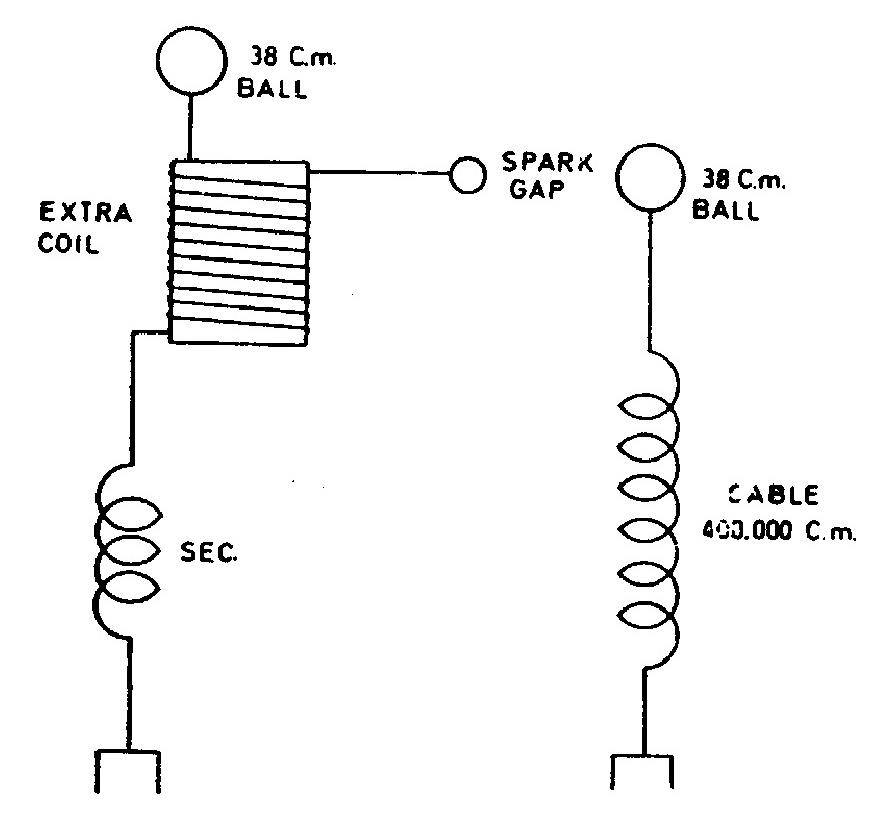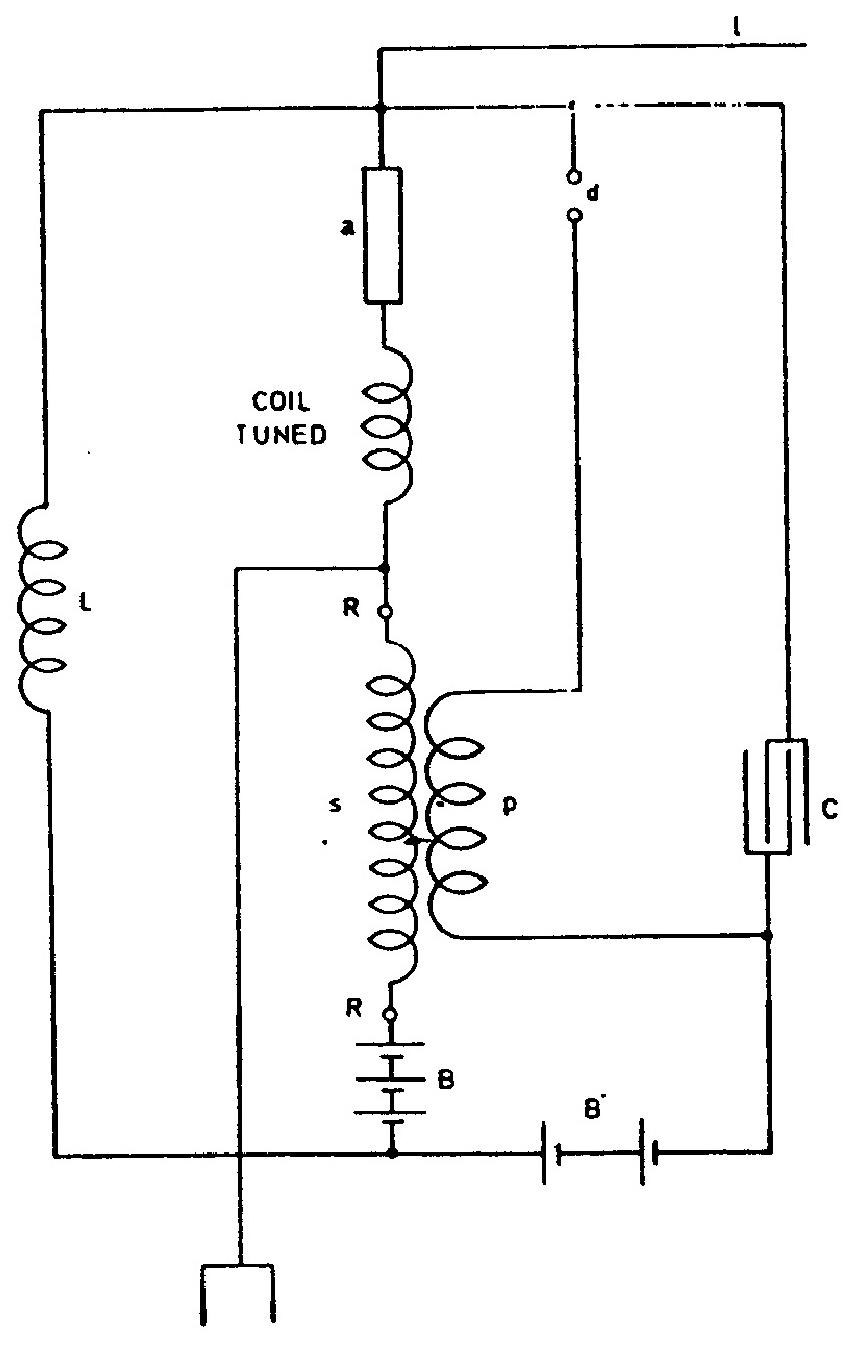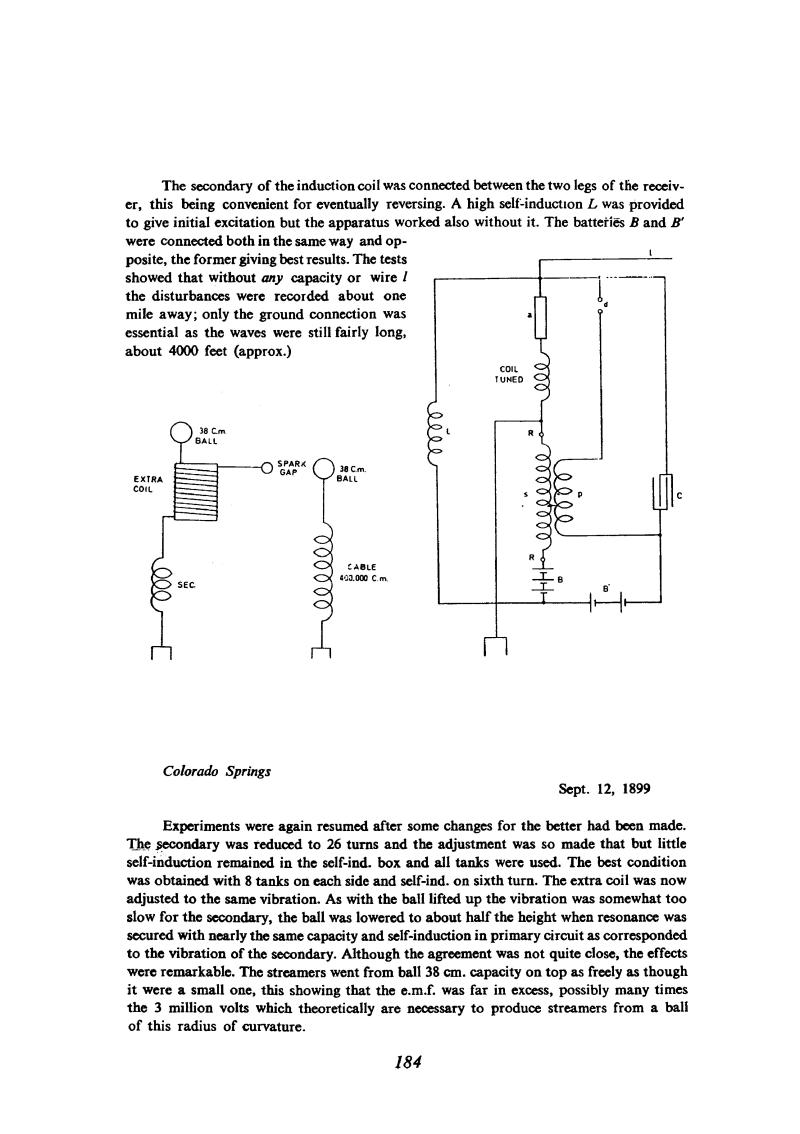
Nikola Tesla Books
The secondary of the induction coil was connected between the two legs of the receiver, this being convenient for eventually reversing. A high self-induction L was provided to give initial excitation but the apparatus worked also without it. The batteries B and Bâ were connected both in the same way and opposite, the former giving best results. The tests showed that without any capacity or wire l the disturbances were recorded about one mile away; only the ground connection was essential as the waves were still fairly long, about 4000 feet (approx.)
Colorado Springs
Sept. 12, 1899
Experiments were again resumed after some changes for the better had been made. The secondary was reduced to 26 turns and the adjustment was so made that but little self-induction remained in the self-ind. box and all tanks were used. The best condition was obtained with 8 tanks on each side and self-ind. on sixth turn. The extra coil was now adjusted to the same vibration. As with the ball lifted up the vibration was somewhat too slow for the secondary, the ball was lowered to about half the height when resonance was secured with nearly the same capacity and self-induction in primary circuit as corresponded to the vibration of the secondary. Although the agreement was not quite close, the effects were remarkable. The streamers went from ball 38 cm. capacity on top as freely as though it were a small one, this showing that the e.m.f. was far in excess, possibly many times the 3 million volts which theoretically are necessary to produce streamers from a ball of this radius of curvature.
184
September 11
Tesla probably thought that he would more easily detect standing waves in the vicinity of the laboratory if the wavelength was shorter. He assumed that the ball-cable system would produce waves which could be registered by the receiver. However, although he measured the electromagnetic field up to a mile away, he probably did not find the expected variation, and could only conclude that electrical disturbances were registered.
September 11
He continued the experiments started two days ago with the intention of finding the nodes in the ground waves. He adjusted the oscillator to produce waves of somewhat higher frequencies than common ones, probably with the intention to get nodes of "standing" waves in the ground closer to the laboratory. The electromagnetic field he measures with the apparatus in Fig. 2, very slightly changed with relation to the previous one (please see Sept. 5, Fig. 3). Although he registered a signal at one mile distance from the laboratory, he does not mention how the signal varied with regard to distance.
September 12
He reduces the number of turns on high frequency transformer coil from 29 to 26, after additional adjustments of primary, secondary, and "additional" coil he resolves that through circuits have almost the same natural oscillating period. He achieved a voltage on the metal globe connected to the oscillator of more than three million volts.



